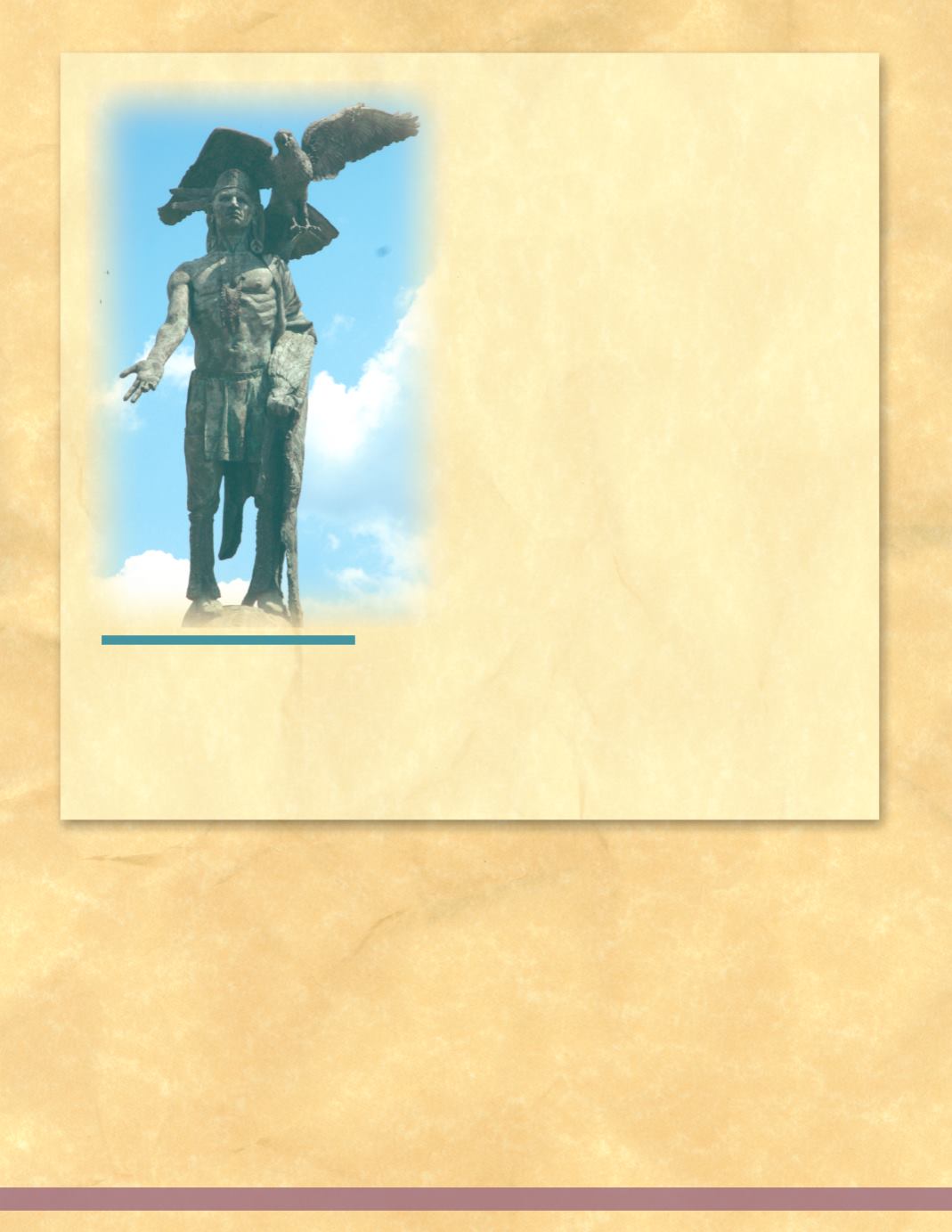
L
ET
’
S
R
EVIEW
1.Who started the colony of Pennsylvania?
2.What was this individual’s religion?
3.What is the kind of government called where kings and queens rule?
4.What is Penn’s Charter?
5. How did Pennsylvania acquire its name?
6. List at least five ideas that emerged fromPenn’s first Frame of Government.
7. Explain what was the Holy Experiment.
8. How did Penn treat the Native Americans?
9.What was the Treaty of Friendship?
10. List at least four freedoms the Charter of Privileges guaranteed to the Pennsylvania colonists.
11.Who ran the colony’s government immediately after Penn suffered a stroke?
12.Write the following in correct chronological order with their dates: Great Law;
Charter of Privileges; Penn’s Charter; Treaty of Friendship; first Frame of Government.
T
AMANEND
,
the Lenni Lenape Chief
WhenWilliamPenn came to Pennsylvania, he
planned a new colony based on peace,
freedom, and fairness. But the land where
WilliamPenn wanted to establish his new
colony was already occupied by Native
Americans.
Tamanend was part of the Lenni Lenape tribe
of Native Americans. This tribe was also known
as the Delaware tribe because they lived in the
areas along the Delaware River in New York, New
Jersey, Pennsylvania, and Delaware. Tamanend’s
clan lived along the Neshaminy Creek near
Philadelphia. WilliamPenn wanted to treat his
new neighbors with respect. He offered to pay
the Native Americans for the land he would use
for his new colony. Tamanend brought together
many chiefs of the Delaware tribe. They met with
Penn and other leaders of the new colony to sign
the Treaty of Friendship, and were paid for the
land given to the new settlers.
Unfortunately, this peaceful arrangement did
not last long past WilliamPenn and Chief
Tamanend. In Chapter 3, you will learn how the
new colony, under the rule of Penn’s sons,
angered the Delaware tribe with theWalking
Purchase.
This statue of Chief Tamanend is in
Philadelphia, near theDelaware River.
There aremany statues of Tamanend in
Pennsylvania and in other states. There
also aremany buildings, schools, and
parks named after this great leader.
The Founding of Pennsylvania
33


